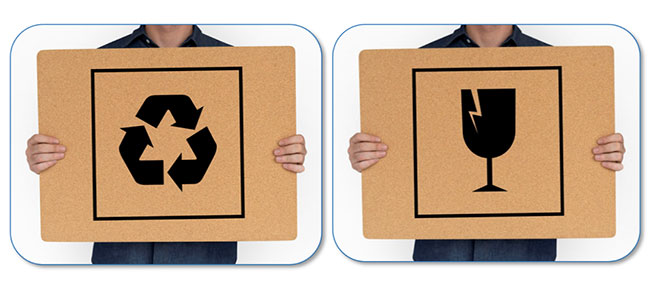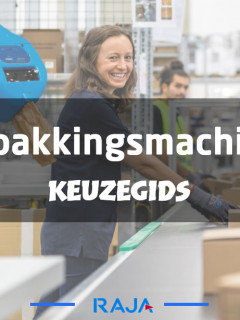There’s more to packaging than meets the eye… And for those who might have a little doubt about that, be sure to read on below. Looking for a clever marketing tool or more efficient logistics? Then check out how good packaging can help you with that in this article and really get the most out of your cardboard box.
What functions does packaging have?
- [1] Protect your products.
- [2] Facilitate transport and storage of goods.
- [3] Highlight your brand and boost customer satisfaction.
- [4] Communicate information about packaging and its contents.
Packaging: a lid for every jar
Here we look at the four basic functions of a pack. We start with the primary functions. These include the technical properties of packaging, such as protection (1) and transport (2). Then it is the turn of the secondary functions. These relate back to aspects such as marketing (3) and communication (4).
► 1. Protection
The original and probably most important function of packaging is to protect a product. We also call this the ‘barrier function’. With good packaging, you protect your goods during storage, transport and shipment to the end customer. This protection can take place on three levels:
-
Protection against natural influences: examples include interaction with water, gas, smoke, bacteria, heat, cold, pests, etc.
-
Protectionagainst physical effects: these include shock, vibration or the internal separation between your products.
-
Protection fromyour product itself: in this case, the danger comes from inside your box. The product you are transporting may itself present a risk. Think of chemical products. Strong packaging (such as these UN boxes) is then essential to protect yourself and your environment.
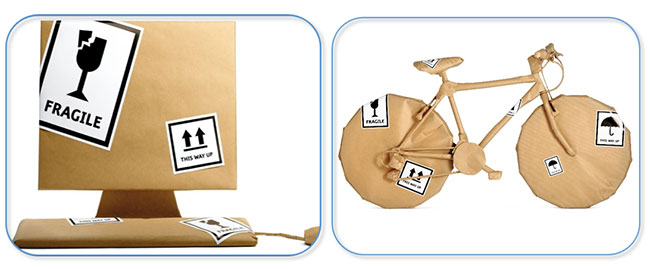
► 2. Storage and transport
This second point of a primary function brings us to the transport and storage of goods. Indeed, good packaging is indispensable for optimal storage. By using a box, for example, you can safely stack your products on top of each other, and do so with as little loss of space between them as possible.
Packing your products also allows you to move them around much more efficiently. Surely there is nothing easier than stacking your packaging on a pallet and using a pump truck to transport it in one smooth motion?
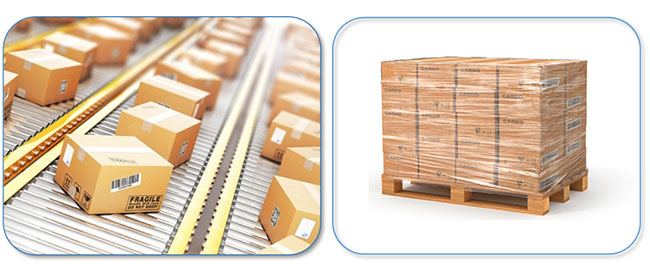
► 3. Brand awareness
As we dropped in the introduction, packaging has great marketing value. Take the situation of e-shops, for example. For many online shops, packaging is often the first (and only) physical point of contact they still have with their customers. All the more reason, then, to personalise packaging to bring a unique message to your customer. For example, add a thank-you note to the inside of your box. That way, you can stand out from the competition just that little bit more.
It should not be underestimated how many people have had your box in their hands: from warehouse workers and couriers to the neighbours. A box is therefore an excellent medium to put your brand in the spotlight. Think of personalised packaging as a passive sales assistant with which you can build a lot of brand awareness. Without you having to do anything extra in return!
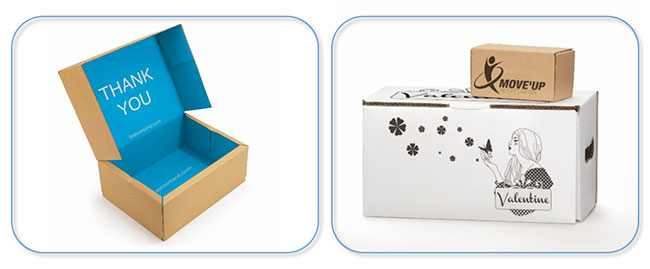
► 4. Packaging as an information carrier
Finally, a box in itself can tell you a lot about the product inside. For example, is the product in the box temperature-sensitive or very fragile? If so, how should you handle this as a recipient? By means of warning labels, for example, you know exactly what to do.
On the box, you can also find information about the packaging itself. For example, how should you open the box or what should you do to recycle it? These are all questions that are cleared up in an instant by a printed symbol on the packaging.
